Bestwood Park was the largest of the royal deer parks of medieval Sherwood Forest.
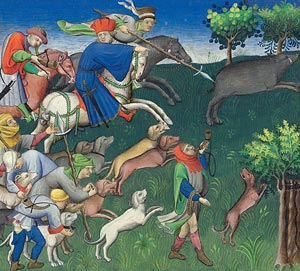
It was enclosed in 1349 as a deer park some 200 years after the other parks of Sherwood (Nottingham Castle Park and Clipstone park).
‘On 30th May that year Robert de Mauley, the chief forester of Sherwood, was ordered to cut down all the wood in Linby Hay and sell it for the King’s use, and to use the money raised from the sale to enclose Beskwood (Bestwood). The work had been completed by 1357’ (Crook 2002).
Before this time it was known as the Hay (hedged wood, or hedged deer enclosure) of Bestwood.
Enclosing this park-
The park stretched from current day Arnold Road in the south (approximately 2½ miles north of the medieval town walls of Nottingham) almost to the village of Papplewick some 4½ miles to the north of that.
It was 2 miles wide at the middle stretching from the town of Bulwell in the west to the Manor of Arnold on the eastern side.
The perimeter fence stretched 9 miles around-
It would certainly have been impressive and would certainly have made no understatement that access was not welcome.
The park enclosed an area of largely wooded-
The outline can still be traced in the modern landscape.
In Medieval times it was bounded to east and west by the two great roads running north from Nottingham. The road to the crown manor of Mansfield marked the western side of the park, passing Newstead Priory just to the north, and the King’s Highway to York on the east.
A journey up either of these roads would have led the traveller along side the fence of the park for a number of miles.
To the north, the park was defined not only by a 3 metre high fence, but also by a stream which emerged from a spring to the north of the Red Hill road cutting (called ‘Rederode’ (Red road) in a 1334 boundary perambulation-
This stream ran around the northern edge of the park to join the River Leen on the western side of the park, which then flowed south to the River Trent.
The River Leen was the western boundary of Sherwood Forest from the 13th Century.
On the northern edge of the park this stream was dammed to form a lake perhaps for fish and for deer to drink from. It is depicted on the 1609 Crown Survey Map of Sherwood Forest by Richard Bankes (Mastoris and Groves 1998).
This map calls the park ‘Bescott Park’ and lists it as a part of Lenton parish, Bestwood was first mentioned in the records in a grant to Lenton Priory by Henry I in the Lenton Register (Crook 2002).
A second pond is shown in the western part of the park on the 1609 map, along with a ‘Waterfall Yate' (gate) a crossing point of the Leen.
The Perambulation mentioned above dating from the 1334 Forest Eyre calls Bestwood ‘Hayea de Beskewode’ (Boulton 1964) and also mentions a 'Waltongate' – presumably an entrance into the park, and a 'Beskwodeforthe' (ford) presumably crossing one of the streams or rivers.
The 1609 survey shows the park to be mainly open pasture dotted with presumably large pollarded oak trees, along with a number of enclosed woods on the eastern edge.
This could reflect the medieval landscape of the park, but it is likely that many of the trees had been removed by this time.
A picture of the landscape of the park can be gained from the oldest surviving map of Sherwood Forest (the Belvoir map) which is dated to the late 13th or early 14th century (Barley 1986).
This map lists a number of landscape features including ‘Holy Stone seke’ (stream) the name for the stream running around the northern edge of the park, ‘Ye Waterfall’ (by the waterfall gate), and a Walton Gate’ the locations of which are confirmed by the later 1609 map depictions.
The hilly topography is shown by the presence of a ‘Kyngg’us hoc hill’ (King’s Oak Hill), ‘Syre hill’, 'ye kosckshote hil’ (cock shoot hill) and ‘Beskwode hede’.
This higher ground is cut by a number of valleys including ‘Marke holyndale’, a ‘paddock dale’, a 'Woldale' and ‘Rydale’.
As well as these valleys an ‘Apultre (Apple tree) Dale ', and a ‘Ye Elder Tree Dale’ suggest that like the Nottingham Castle Park, Bestwood Park provided more than just deer.
This multiple land use is backed up by the presence of 'ye Medow' (meadow) on the eastern side of the park.
Deer lawns were also present in the park as at Clipstone with 'ye lawnde noke' being shown in the north of the park.
The care of this landscape was the responsibility of the ‘keeper of the forest of Bestwood’ who oversaw control of this park from a lodge named ‘loge’ on this medieval map.
In 1284 Gervaise de Clifton Sheriff of Nottinghamshire and Derbyshire was permitted 10 marks for the building of this lodge for the King, and in 1286 he was ordered to pay Robert de Tybotot ‘keeper of the forest of Bestwood’ 10 marks (Crook 2002) to complete the job.
The park of Bestwood may have been enclosed as it was in 1349 to improve deer management in the southern part of the forest, following the reduction in the size of Sherwood Forest in the 13th century. As a park it would have supported more deer than the other two parks present at the time combined.
Whatever the reason for the emparkment, Bestwood became the largest park in Sherwood Forest and largely replaced Clipstone Park in the north of the forest in the 14th century in terms of royal patronage.
The strategic location of Bestwood between the two great roads through the forest, in close proximity to Nottingham, with its lodge occupying a vantage point commanding views all the way to Leicestershire to the south; made it a great location for a royal stay.
It was from this very park that Richard III would set out on his fateful journey to the battlefield of Bosworth in 1485, which would bring an end to the medieval Plantaganet dynasty and bring around the Tudor-
... But that is another story...
Andy Gaunt, first published 27/02/2012)
Click here for more ‘Stories from the Forest’…
Why not have a look on the map below which is focused on the southern boundary of the former deer park.
The B6004 is the southern boundary, Hucknall Road the western one, and Mansfield Road (A60) the eastern boundary.
The village of Papplewick is many miles north of this point.
The southern portion is now part of the City of Nottingham, the northern half is open countryside.
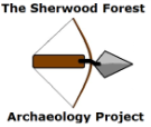


Community Archaeology Nottinghamshire, Community Archaeology Derbyshire, Community Archaeology Leicestershire, Community Archaeology East Midlands, Mercian Archaeological Services Community Archaeology for Nottinghamshire, Derbyshire, Sherwood Forest, Leicestershire and the East Midlands. Community Archaeology Nottinghamshire, Community Archaeology East Midlands, Community Archaeology Leicestershire. Archaeological

Medieval Deer Parks of Sherwood Forest: Bestwood Park
Award Winners 2016
for "Engaging people in the heritage, history & archaeology of Sherwood Forest".
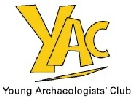
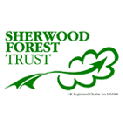



Some funders and partners:
World-









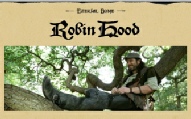

The Future of Sherwood’s Past
Project page links:
-
-
-
-
-
-
-
-
The Sherwood Forest
National Nature Reserve Archaeology Survey
-
Long term Research at
King John’s Palace:
Ancient Royal Heart of Sherwood Forest
-
The Sherwood Forest Archaeology Training Fieldschool
-
“Scirwuda-
Ghost and Shadow woods of Sherwood Forest Project
-
Investigating Thynghowe Viking
Meeting Site
-
Searching for the
The Battle of Hatfield
-
-
Fieldswork at St Edwin’s Chapel
-
St Mary’s Norton-
-
Mapping Medieval Sherwood Forest
-
The Sherwood Forest LiDAR
Project
-
Warsop Old Hall
Archaeological Project
-
The Sherwood Villages Project:
Settlement Development in the Forest
-
-
-
Researching Edward IIs fortification at Clipstone Peel
-
-
-
-
The Cistercians of Rufford Project:
Settlement Development, Dynamics and Desertion.
-
Sherwood Forest Environmental Survey
-
World War II in Sherwood Forest -
-
World War I in Sherwood Forest -
-
About Medieval Sherwood Forest
-
Robin Hood and Sherwood Forest
-
-
-
-
-
-
-
-
-
-
-
-
Mercian Archaeological Services CIC (Community Interest Company)
An Independent Research Company, specialising in Training, Community Archaeology & Public Involvement.
Community Archaeology Nottinghamshire, Excavation, Research, Volunteering, Community Archaeology Derbyshire, Training, Social, Learning, Community Archaeology Leicestershire, Heritage, Involvement, Belonging, Knowledge sharing, Community Archaeology Lincolnshire, Topographic Survey, Talks and Presentations, Outreach, Archaeology Projects , Open Days, Schools, Finds Processing, Day Schools, Field Schools, Young People, Archaeology and History of Sherwood Forest, Pottery Research, Medieval, Roman, Prehistoric, Community Interest Company, Community Archaeology Nottinghamshire.
Community Archaeology in Nottinghamshire
Community Archaeology in Derbyshire
Community Archaeology in Leicestershire
Community Archaeology East Midlands
Community Archaeology in Lincolnshire
© Mercian Archaeological Services CIC 2019. Registered Business No. 08347842. All Rights Reserved.
Community Archaeology in Yorkshire
Project page links:
-
-
-
-
-
-
-
-
The Sherwood Forest
National Nature Reserve Archaeology Survey
-
Long term Research at
King John’s Palace:
Ancient Royal Heart of Sherwood Forest
-
The Sherwood Forest Archaeology Training Fieldschool
-
“Scirwuda-
Ghost and Shadow woods of Sherwood Forest Project
-
Investigating Thynghowe Viking
Meeting Site
-
Searching for the
The Battle of Hatfield
-
-
Fieldswork at St Edwin’s Chapel
-
St Mary’s Norton-
-
Mapping Medieval Sherwood Forest
-
The Sherwood Forest LiDAR
Project
-
Warsop Old Hall
Archaeological Project
-
The Sherwood Villages Project:
Settlement Development in the Forest
-
-
-
Researching Edward IIs fortification at Clipstone Peel
-
-
-
-
The Cistercians of Rufford Project:
Settlement Development, Dynamics and Desertion.
-
Sherwood Forest Environmental Survey
-
World War II in Sherwood Forest -
-
World War I in Sherwood Forest -
-
About Medieval Sherwood Forest
-
Robin Hood and Sherwood Forest
-
-
-
-
-
-
-
-
-
-
-
-